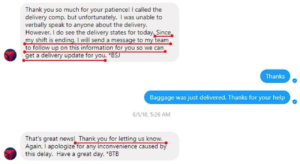How To Create An Effective Facebook Lead Form Campaign
Have you been interested in generating more leads from Facebook? Facebook lead forms and their capabilities are a big part of why so many businesses rely on the social platform for their advertising. Rightfully so, these campaigns have increased potential for thousands of brands to acquire new customers.
In this article, you will learn how to not only set up your Facebook lead form campaigns, but also make sure they are effective in generating quality leads for your business.
How to create a Facebook lead generation campaign
To start, you will set up a campaign as normal in the Facebook Business Manager or any other campaign management platform tool you use. Since we’re focused on customer acquisition, choose “Lead generation” from the list of objectives.

When choosing audiences for this campaign, we recommend choosing custom or lookalike audiences. This way you can ensure the audience is highly relevant, therefore increasing the quality of your leads as well. After you complete setting up your campaign with audiences, budget, and creatives, it’s time to move onto creating your lead form.
Creating a Facebook lead form
To create the form is simple, however to optimize for best results is in small details that can make a huge difference.
First, you will need to choose which type of form you want to use for the campaign.
Your options are:
- More Volume, which is a form that’s quite simple to fill out and optimized specifically for mobile
- Higher Intent, which takes the customer through that one extra step to confirm their information which indicates higher level of intent from generated leads

Fill out the other information listed, including a privacy policy, and more or less you are finished with the form. But what about optimization and making sure you are getting the absolute maximum potential from your lead form?
Optimization tips for your lead ads
- Ask the right amount of questions. In an experiment done by Adespresso, they found that the more questions you ask on your lead form, the higher your cost per lead will be. The other important finding is that removing too many barriers between the customer and the conversion will put your campaign at risk for generating very low quality leads.

According to this chart from Adespresso, the most significant data to pay attention to is the difference in CPL at 5 versus 6 questions. The cost more than doubles per lead. We would advise you on including 5 or fewer questions for your customers on lead forms. - Present an enticing offer. Who doesn’t love free stuff? Use it as a way to introduce a product or service to your audience that is very low-effort from the customer’s side. Lead forms are also growing in popularity to use during busy seasons such as Black Friday week to sign up for “exclusive deals” or subscribe to a newsletter for early access. This is where your lead form will come in handy to collect their information to nurture the relationship to an eventual conversion.
- Make your questions sales-oriented. High numbers of lead generation from a campaign may look good on paper, but they are essentially useless if the quality is not relevant. The best leads are qualified leads. These are the people most likely to buy something. To find these people, use your instant form to ask qualifying questions. Another way to make sure your campaigns are relevant is to be very specific with audience targeting, utilizing several custom and lookalike audiences based on website visits, past leads, or anything else relevant for your company.
More from Onimod Global
Looking for an agency to help you with your paid social media strategy and Facebook lead generation campaign performance? Reach out to us here!
Onimod Global releases the latest digital marketing news and essential marketing tips every Tuesday and Thursday! To catch up on the top digital marketing news and trends, click here. To find out more about who we are and what we do, click here.


